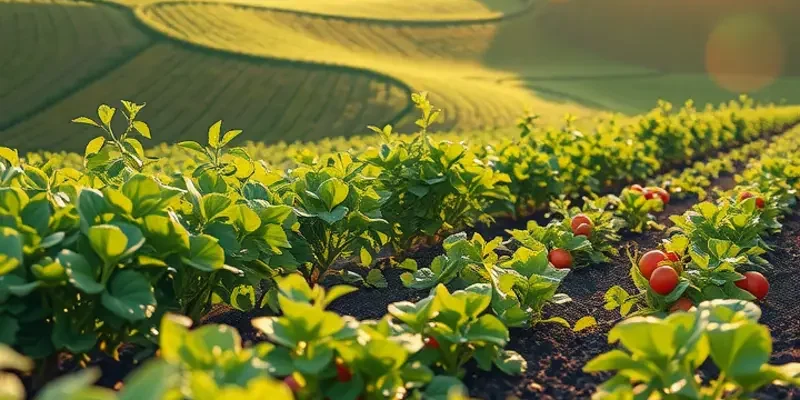Food waste has grown to be a significant concern in households, causing monetary loss and environmental issues. Understanding how to track and manage food waste can lead to better storage practices, reduced waste, and improved food management at home. By implementing a few practical strategies, anyone can efficiently monitor their food consumption, utilize leftovers, and store items safely. This article provides clear steps to minimize waste and enhance food preservation.
Understanding Food Labels and Dates

Interpreting food labels effectively is essential in managing your kitchen’s food waste. Deciphering terms like ‘best before,’ ‘use by,’ and ‘sell by,’ can significantly impact how you store and utilize food items.
Best Before Dates
The ‘best before’ date is mainly about food quality rather than safety. Food can often be consumed after this date if it’s been stored correctly, though the flavor and texture might not be at their peak. The purpose of this label is to ensure you enjoy the product at its best. Consider sensory checks like smell and appearance before judging whether to consume the item. This category includes canned goods, dried foods, and frozen products.
Use By Dates
In contrast, ‘use by’ dates are about safety. Consuming food that is past its ‘use by’ date poses health risks, especially for perishable items like dairy, meats, and ready-to-eat salads. Sticking to these dates is vital in preventing foodborne illnesses. Be sure to refrigerate items appropriately to retain their freshness till the stated date.
Sell By Dates
The ‘sell by’ label primarily assists retailers in managing product turnover for inventory purposes. It’s not a safety label for the consumer, but rather an indicator for stores. While these items are often good for consumption beyond the ‘sell by’ date, it’s wise to check quality upon opening.
Tips for Reducing Waste with Date Labels
-
Storage: Knowing optimal storage can prolong the life of food items. Perishable items demand refrigeration, while others can last longer in dark, dry, and cool areas. An eco-smart kitchen storage solution is advisable for better organization and waste reduction.
-
Plan and Rotate: Implement a ‘first in, first out’ system. Position newer purchases behind older ones to utilize them while they’re fresher.
-
Mindful Consumption: Regularly review fridge contents and plan meals that use nearing-expiry ingredients. This strategy helps minimize waste by ensuring you use items before they’re no longer suitable for consumption.
Understanding these label types helps manage home food storage effectively. Examine labels closely, and consider using sensory judgments in conjunction. Always remember, your senses are valuable tools in identifying whether food is still fit for consumption. Combine this with smart storage practices and thoughtful planning to lead a more sustainable lifestyle without unnecessary waste.
Effective Food Storage Techniques

Storing food correctly can significantly extend its shelf life, helping to reduce waste. One of the most crucial methods is understanding how to utilize your refrigerator effectively. Positioning plays an important role; place dairy products on the top shelves where the temperature is consistent, and store meats in the coldest part of the refrigerator, usually the bottom shelf.
Proper utilization of drawers is essential too. Use the crisper drawer for fruits and vegetables. Keep fruits separate from vegetables, as some fruits produce ethylene gas, which can cause vegetables to spoil quicker. Consider lining these drawers with paper towels to absorb excess moisture and keep produce fresher for longer.
Identifying optimal storage containers is another key factor. Airtight containers or resealable bags help maintain freshness by reducing exposure to air. When storing liquids such as sauces or soups, leave some headroom at the top of containers if freezing, to allow for expansion and prevent cracking.
Understanding freezing techniques can also help. Firstly, consider the portion sizes you tend to use frequently; freezing in meal-sized portions will reduce waste and make defrosting easier. Utilize sturdy freezer bags or containers, and label each with the date and contents to keep track of what needs to be consumed first. Another helpful tip is to keep the freezer full, as it helps to maintain a low temperature more efficiently, though be sure not to overfill it, as air circulation is necessary for optimal cooling.
Vacuum sealing is an advanced method that can substantially extend shelf life by removing air from packaging. This process is especially effective for meats, cheeses, and even fruits and vegetables. However, it requires specialized equipment which not every household may possess.
Embrace eco-smart practices by learning how to store specific ingredients more sustainably. You can reduce food spoilage and create a more efficient kitchen environment. To learn more about eco-friendly storage, check out eco-smart kitchen storage techniques.
By leveraging these effective storage techniques, the goal of minimizing waste and extending food shelf life becomes more attainable. Such practices contribute to a more sustainable and resource-efficient home, aligning with a broader mission to reduce our overall environmental footprint.
Final words
Understanding and tracking food waste is essential for reducing it effectively. By familiarizing yourself with food labels and utilizing proper storage techniques, you can minimize waste while ensuring that food remains safe and nutritious. Implementing these strategies not only aids in personal sustainability efforts but also contributes to broader environmental goals. Making conscious choices regarding food management can lead to healthier eating habits and a more organized kitchen. With a little effort and awareness, anyone can make a significant impact on reducing food waste at home.







